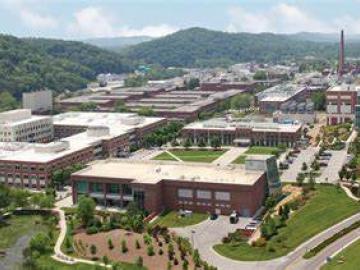Filter News
Area of Research
- Advanced Manufacturing (3)
- Biological Systems (1)
- Biology and Environment (45)
- Clean Energy (40)
- Computational Biology (1)
- Computer Science (2)
- Fusion and Fission (5)
- Materials (20)
- Materials for Computing (5)
- National Security (14)
- Neutron Science (11)
- Nuclear Science and Technology (4)
- Quantum information Science (3)
- Supercomputing (59)
News Type
News Topics
- (-) 3-D Printing/Advanced Manufacturing (33)
- (-) Bioenergy (46)
- (-) Composites (5)
- (-) Computer Science (76)
- (-) High-Performance Computing (38)
- (-) Microscopy (19)
- (-) Molten Salt (1)
- Advanced Reactors (6)
- Artificial Intelligence (38)
- Big Data (21)
- Biology (53)
- Biomedical (26)
- Biotechnology (9)
- Buildings (16)
- Chemical Sciences (19)
- Clean Water (14)
- Climate Change (44)
- Coronavirus (17)
- Critical Materials (1)
- Cybersecurity (14)
- Decarbonization (39)
- Emergency (1)
- Energy Storage (28)
- Environment (98)
- Exascale Computing (21)
- Fossil Energy (3)
- Frontier (19)
- Fusion (27)
- Grid (20)
- Hydropower (5)
- Isotopes (23)
- ITER (2)
- Machine Learning (19)
- Materials (37)
- Materials Science (36)
- Mathematics (5)
- Mercury (7)
- Microelectronics (2)
- Nanotechnology (16)
- National Security (30)
- Net Zero (6)
- Neutron Science (43)
- Nuclear Energy (49)
- Partnerships (11)
- Physics (25)
- Polymers (7)
- Quantum Computing (14)
- Quantum Science (23)
- Renewable Energy (1)
- Security (10)
- Simulation (23)
- Software (1)
- Space Exploration (11)
- Summit (29)
- Sustainable Energy (36)
- Transformational Challenge Reactor (3)
- Transportation (25)
Media Contacts

Rishi Pillai and his research team from ORNL will receive a Best Paper award from the American Society of Mechanical Engineers International Gas Turbine Institute in June at the Turbo Expo 2024 in London.

Held in Cocoa Beach, Florida from March 11 to 14, researchers across the computing and data spectra participated in sessions developed by staff members from the Department of Energy’s Oak Ridge National Laboratory, or ORNL, Sandia National Laboratories and the Swiss National Supercomputing Centre.

ORNL’s Erin Webb is co-leading a new Circular Bioeconomy Systems Convergent Research Initiative focused on advancing production and use of renewable carbon from Tennessee to meet societal needs.

Scientists at ORNL have developed 3D-printed collimator techniques that can be used to custom design collimators that better filter out noise during different types of neutron scattering experiments
ORNL scientists have determined how to avoid costly and potentially irreparable damage to large metallic parts fabricated through additive manufacturing, also known as 3D printing, that is caused by residual stress in the material.

An experiment by researchers at the Department of Energy’s Oak Ridge National Laboratory demonstrated advanced quantum-based cybersecurity can be realized in a deployed fiber link.

ORNL scientists and researchers attended the annual American Geophysical Union meeting and came away inspired for the year ahead in geospatial, earth and climate science.

New computational framework speeds discovery of fungal metabolites, key to plant health and used in drug therapies and for other uses.

In summer 2023, ORNL's Prasanna Balaprakash was invited to speak at a roundtable discussion focused on the importance of academic artificial intelligence research and development hosted by the White House Office of Science and Technology Policy and the U.S. National Science Foundation.

The U.S. Department of Energy’s Oak Ridge Leadership Computing Facility has informed the recipients of high-performance computing time through the SummitPLUS allocation program, which extends the operation of the Summit supercomputer through October 2024.




